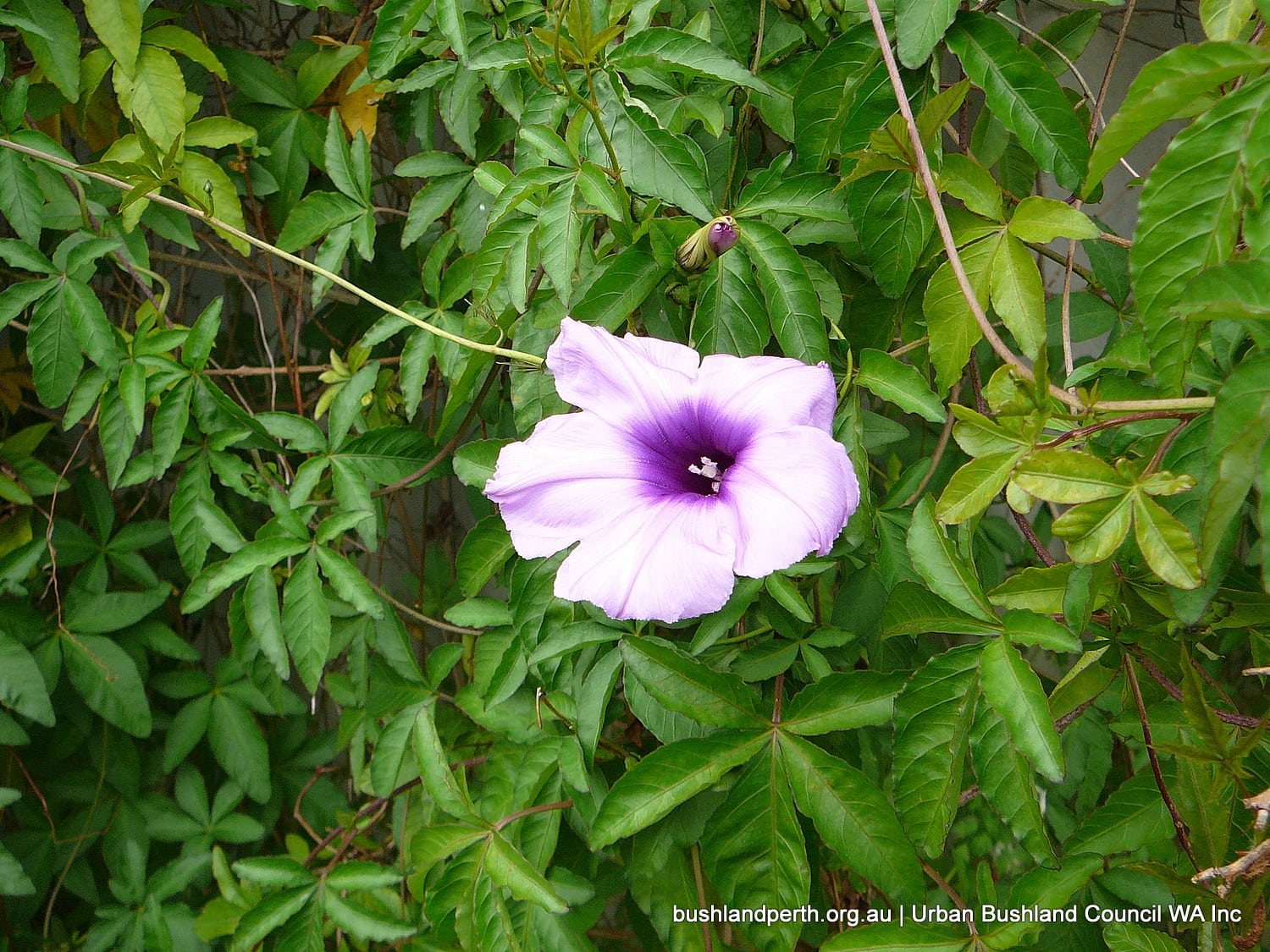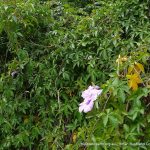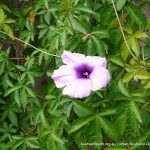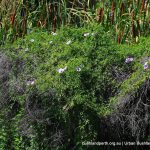Coast Morning Glory or Mile-a-Minute

Common name
Coast Morning Glory or Mile-a-Minute
Scientific Name
Ipomoea cairica
Type of plant
Uncategorised
About this weed
These perennial vines with tuberous roots were originally introduced from India and tropical Africa as garden plants but have now escaped and are common in bushland and along rivers and creeks. The vines grow rapidly and quickly smother existing vegetation including trees and shrubs.
Description
Ipomoea cairica produces mauve-pink funnel-shaped flowers mainly through spring and summer but occasionally during other months. The leaves have between five and seven finger-like lobes. Reproduction is by seeds, stems and stolons and the young stems are red. The weed is dispersed by wind, water and garden refuse. It takes about a year before the first flowers are produced. It is commonly grown in gardens and has apparently naturalised.
Impact on Bushland
This rapidly growing climber (hence the name Mile -a-Minute) is capable of smothering all vegetation. The weight of vine can crush other species on which it grows.
Location
Usually can be seen in Perth’s older suburbs.
Priority for removal
High: causes acute disruption of ecological processes, dominates and/or significantly alters vegetation structure, composition and function of ecosystems.
Management (hand)
Hand pull seedlings, ensuring removal of all root material and all stem material in contact with soil. Sever vines at base and leave to dry in the canopy.
Management (herbicide)
Cut thin vines at chest height, then lie lower sections on ground and apply herbicide spray. For thicker vines, scrape and paint stem with 100% Glyphosate. Monitor for the next 2 years. Read the manufacturers’ labels and material safety data sheets before using herbicides.
Flowering month/s
All year
Flower colour/s
Blue, Pink, Purple
Information source
https://florabase.dpaw.wa.gov.au/browse/profile/6620
Additional information
https://florabase.dpaw.wa.gov.au/weeds/swanweeds/
Hussey, B.M.J., Keighery, G.J., Dodd, J., Lloyd, S.G. and Cousens, R.D. (2007) Western weeds. A guide to the weeds of Western Australia, Second Edition, The Weeds Society of Western Australia, Victoria Park, Western Australia.



